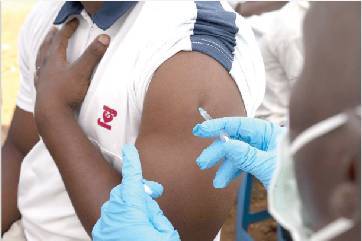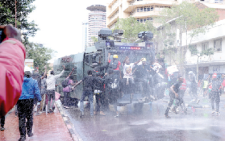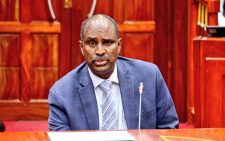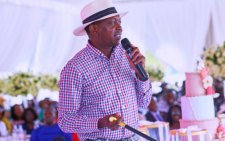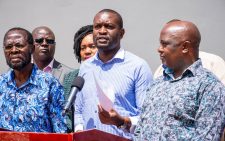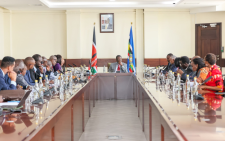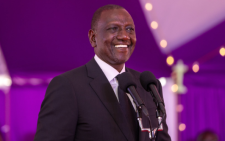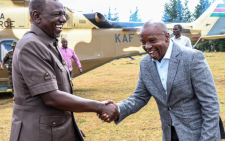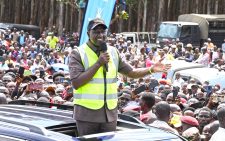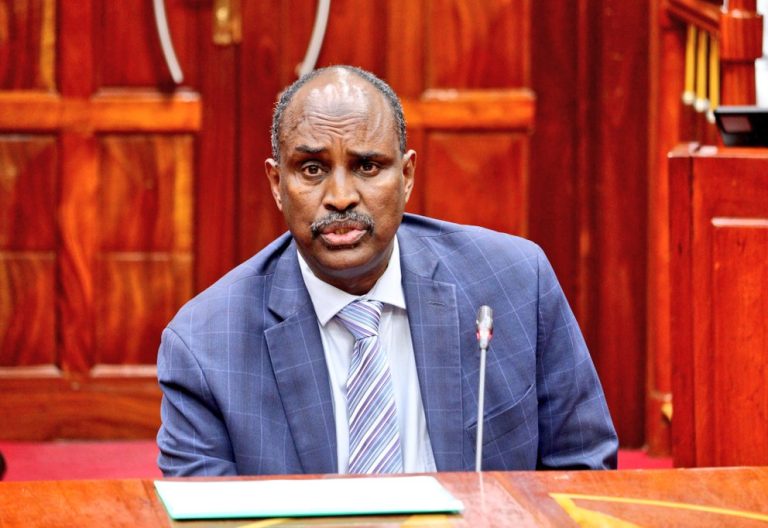Command centre where war against Covid was waged
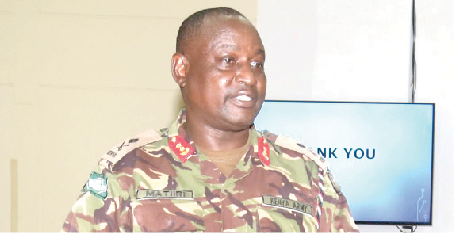
For a whole year, they stayed away from their families and put aside their personal interests for the sake of the lives of 40-plus million Kenyans.
As soon as the first case of Covid-19 was reported in the country on March 13, 2020, they packed their belongings, said goodbye to their families and friends, and went to live at an army barracks, where they were to remain for an entire year, rarely interacting with the outside world.
They were members of the national task force on Covid-19 composed of approximately 100 representatives from various ministries and other critical government agencies, including the military and the General Service Unit.
Two years after the first case of coronavirus was reported in the country, People Daily can exclusively reveal how the government assembled the team and put it at one of the most secure facilities.
When it became clear that the disease would eventually find its way to Kenya, President Uhuru Kenyatta’s administration developed measures to protect Kenyans.
“It was a decision that had to be made very fast. The disease was spreading fast, leaving deaths and crises in hospitals all over the world,” Health Cabinet Secretary Mutahi Kagwe recalls the situation.
On February 28, 2020, the President issued Executive Order No 2 of 2020 to create the National Emergency Response Committee on coronavirus.
The government also developed a national emergency response framework as well as a national task force which consisted of technical people to advise the government on how to deal with the virus.
Known as the National Multi-Agency Command Centre on Covid-19 (NMACC), the national task force was under the command of Major-General Ayub Matiri.
Its mandate was to develop interventions to contain the spread of Covid-19 pandemic.
The team had representation from the Department of Defence, the Ministries of Interior, Health, Water, Foreign Affairs, Public Works and Education.
Besides the main unit, it had a branch at the Directorate of Criminal Investigations Academy in Nairobi’s South C which was under the joint leadership of the Directorate of Criminal Investigations, Ministry of Health as well as the Nairobi Metropolitan Service (NMS).
While members of the team thought that their task would allow them have an ordinary work life, it would soon dawn on them that nothing was ordinary in times of a pandemic, particularly if your duty is to do everything in your power to save as many lives as possible.
The first thing that they had to forego was the comfort of their homes and the company of their families and friends. Instead, they moved to a secure facility in the Kenya Army Embakasi Barracks (Garrison), secluded area usually only reserved for the President.
Data collection
Their brief? They were to be in charge of a 24-hour surveillance unit that would monitor and advise the government on how to deal with the pandemic.
“We were housed at the Embakasi Barracks, in the presidential area. We were not allowed to intermingle with the outside world in order to control the rate of the infections. The work was intensive. The centre was operating for 24 hours,” Dr Emmanuel Okunga, the head of disease surveillance who was part of the team, said.
Placing members of the team in the facility and under the stewardship of a military major-general was to ensure discipline and a proper chain of command.
The command centre’s role included research, data collection, advising the government on the guidelines to check on the spread of the disease, monitoring compliance to the Covid-19 protocols, analysing information on the pandemic and advising the national advisory committee that would then communicate to the President.
Most of what the President communicated during the periodic addresses on the pandemic was informed by the command centre’s work. And so was the Health Cabinet Secretary’s daily updates.
The composition of the team was only hinted when former GSU deputy commandant William Singoei, who was part of the team, was in May 2021 found dead in his room in the military facility.
The team also assembled a unit of data analysts, epidemiologists and technical officials which was tasked with collecting, analysing and packaging of Covid-19 statistics-from the number of positive cases, admissions, discharges and deaths related to the pandemic.
Dr Fridah Geteri, a technical officer at the unit, says she had a team of seven people assigned to get data from all the 47 counties in private and public hospitals. The teams reported their data to their respective county surveillance officers.
Every facility that tested and admitted Covid-19 patients was supposed to report to the county surveillance officers who had to give their daily number of those that had been tested, those whose results were positive to get the number of new cases, the number of admissions or on self-isolation.
“The figures also included individuals that had been discharged and deaths,” Geteri said.
She added: “We got the figures by 8:30am and embarked on summarising the report and by noon, the report was circulated to the Ministry’s leadership for the preparation of the daily media report that was read by the minister.”
Boniface Waweru, an epidemiologist, says there are currently 108 laboratories that carry out Covid-19 tests across the country and a portal has been created which enables them to post reports online.
Another team based at the headquarters has a role of verifying the data and cleaning it by among other things, counterchecking to ensure that there are no repeats and establish cases of re-infections.
Though the team remained holed up in the highly guarded barracks, they were, however, placed in a vantage position that enabled them get first-hand reports about the rolling thunder of the pandemic.
And being popular with the public was the least of their cares. Their only concern was to save lives and livelihoods.
“The decisions were taken under the guidance of the available science and data that we kept receiving. We had to take measures, however, unpopular they were,” Dr Okunga says.
He added: “The command centre dealt with statistics from the civil registration system.”
The management of the pandemic, according to Dr Okunga, had three layers of leadership: Uhuru and his Health CS Mutahi Kagwe dealt mainly with policy; the middle level that was under the stewardship of Principal Secretaries and dealt with mobilisation of resources and the Embakasi-based national multiagency command centre.
Despite being in the highly restricted environment, the team members, like the rest of Kenyans, had to live with the constant fear that they would fall victim to the disease.
These fears were heightened when the number of casualties, which included frontline health care workers and high profile members of the society, were reported to have been infected or died.
“There is that ever-present fear that when someone dies, you could be the next,” he says.
For over one year, the team remained in the barracks. They were later only allowed to leave the facility on weekends.
The command centre is still active but the movement restrictions have since been relaxed after the infections rate went down as members of the team monitor the situation for the possibility of a new wave.


